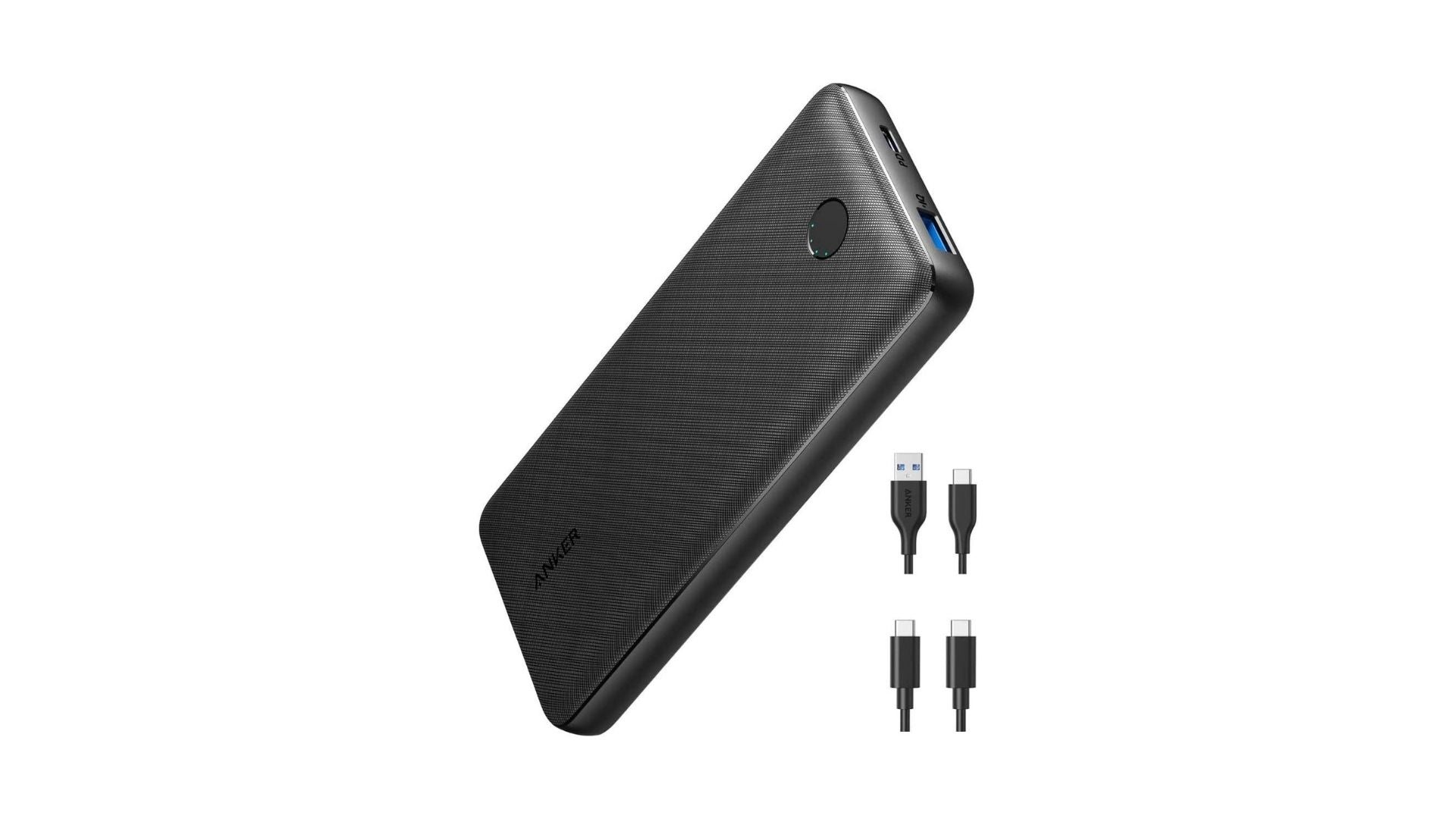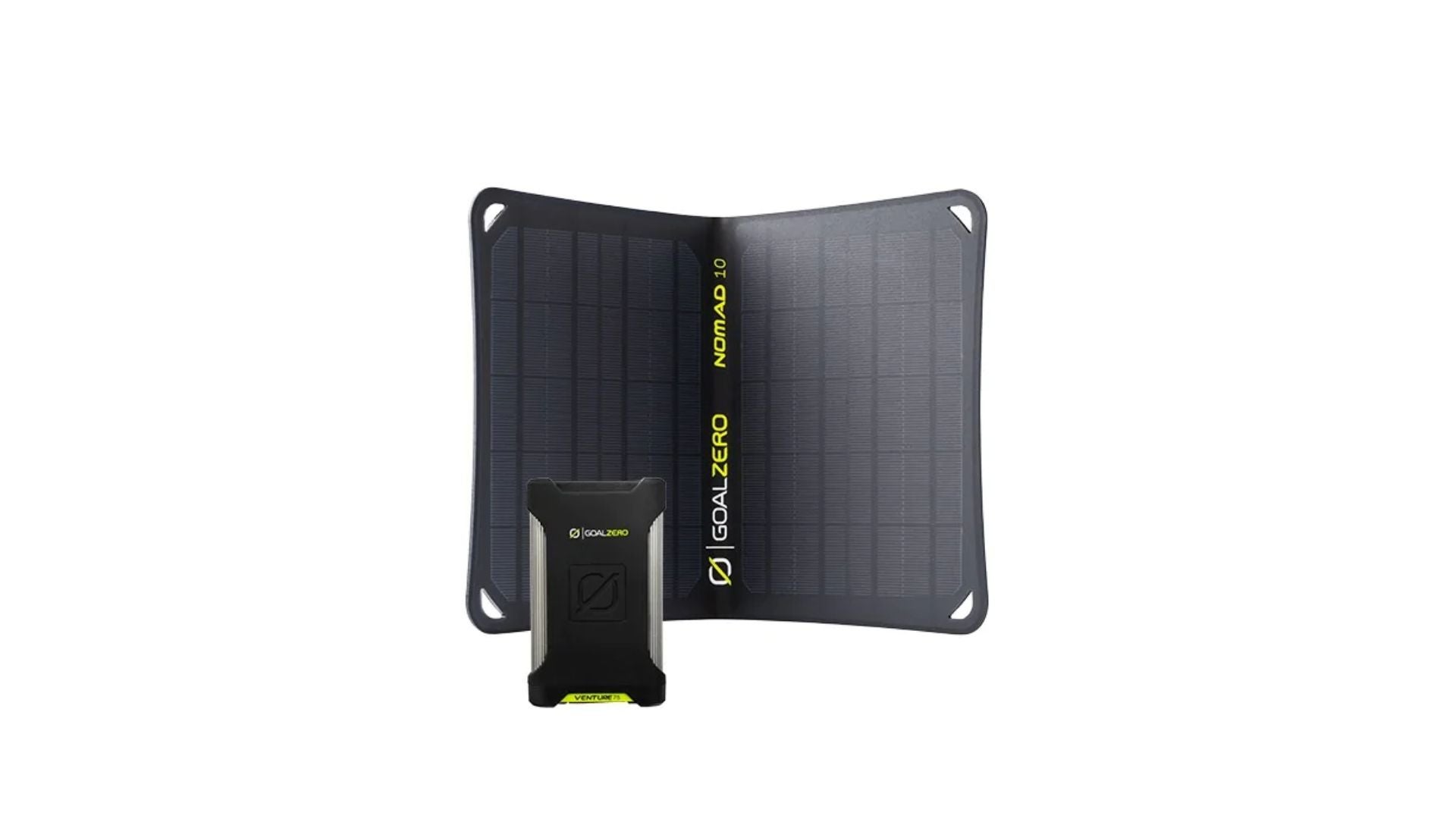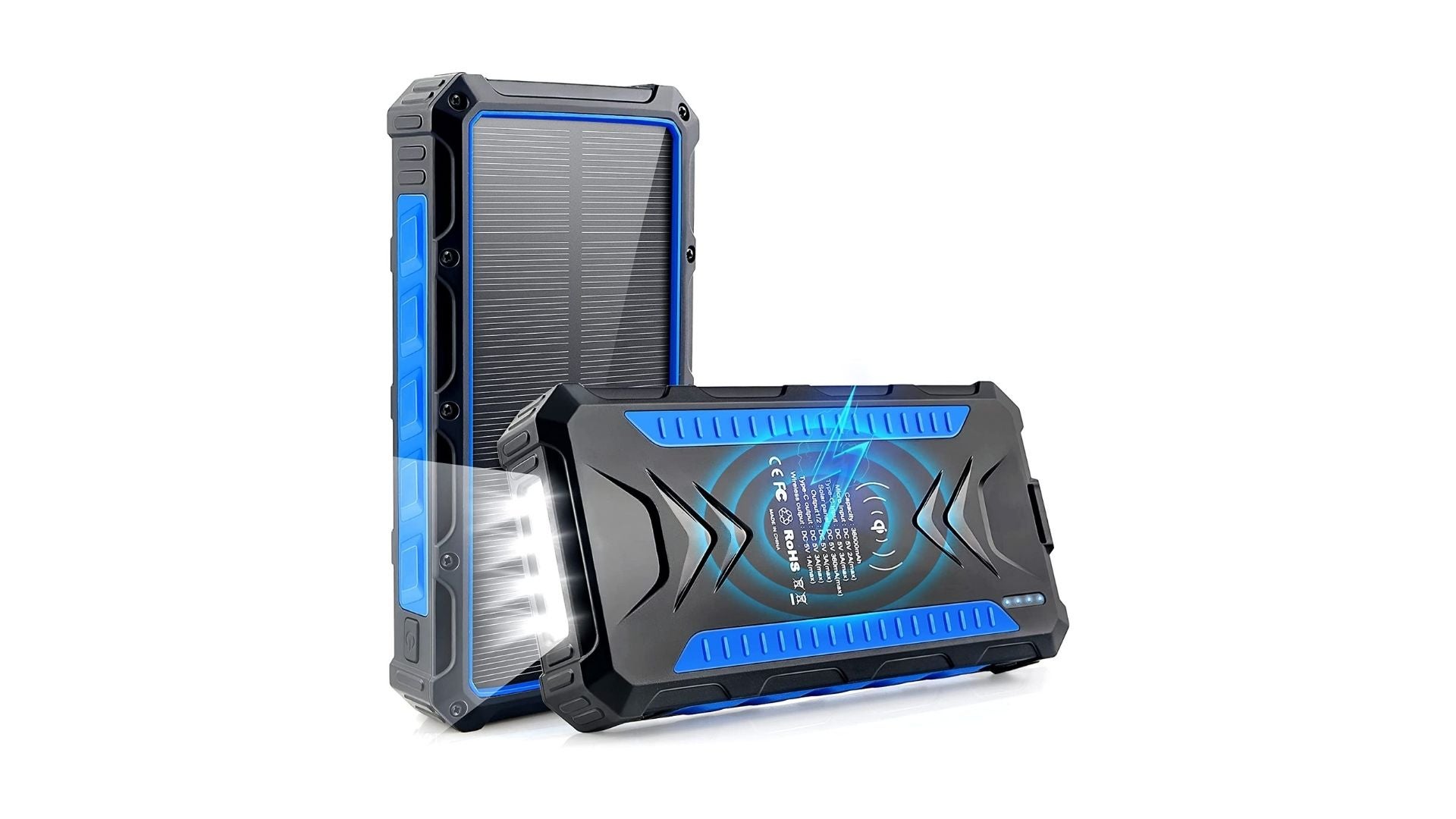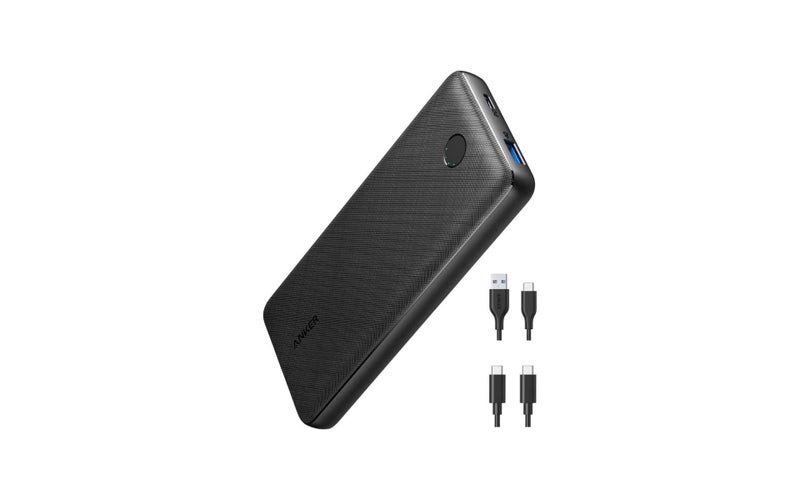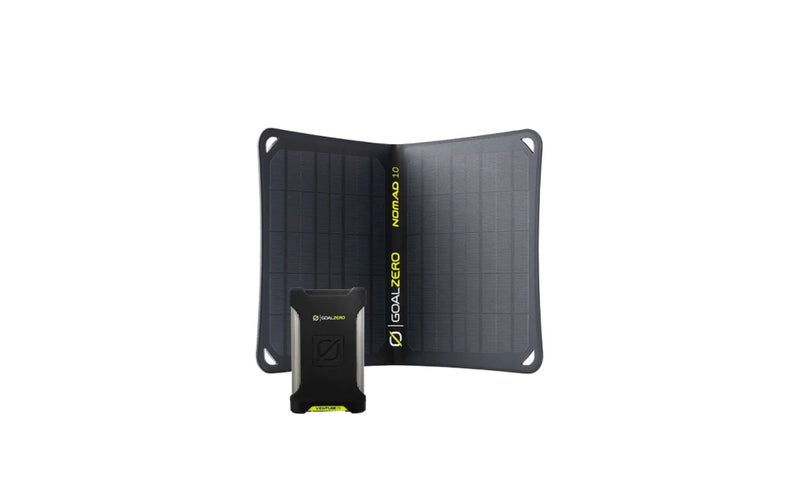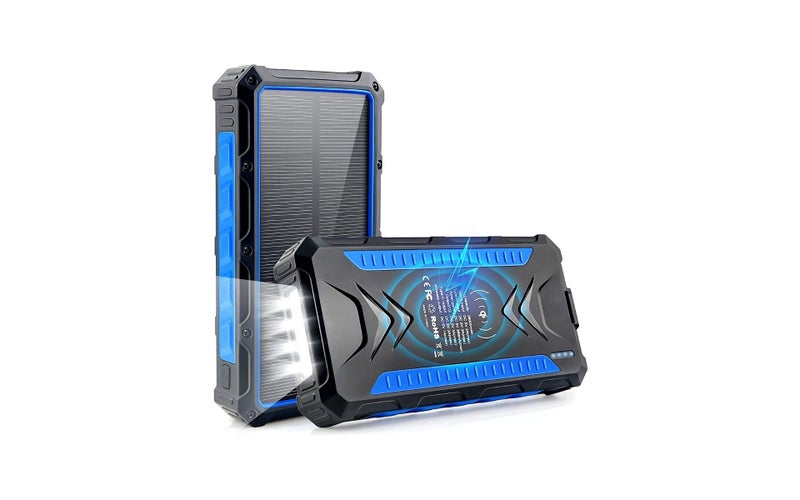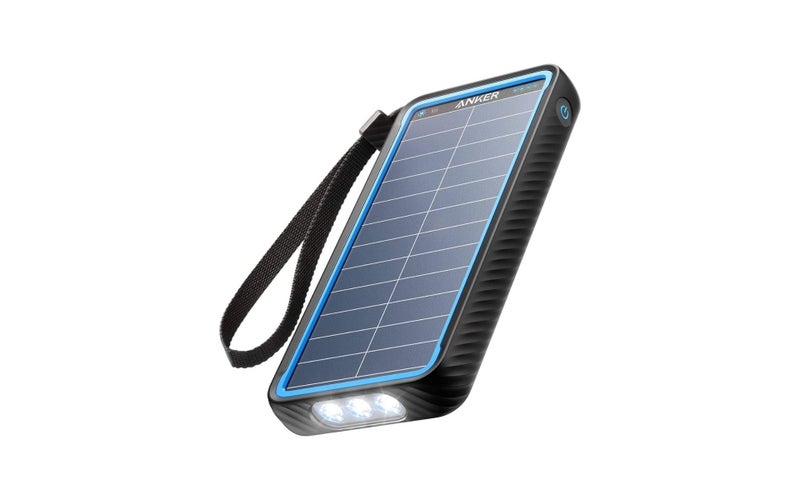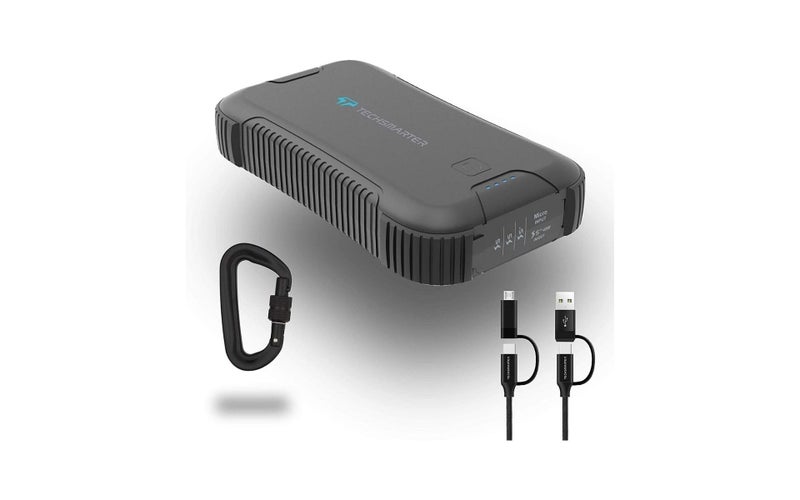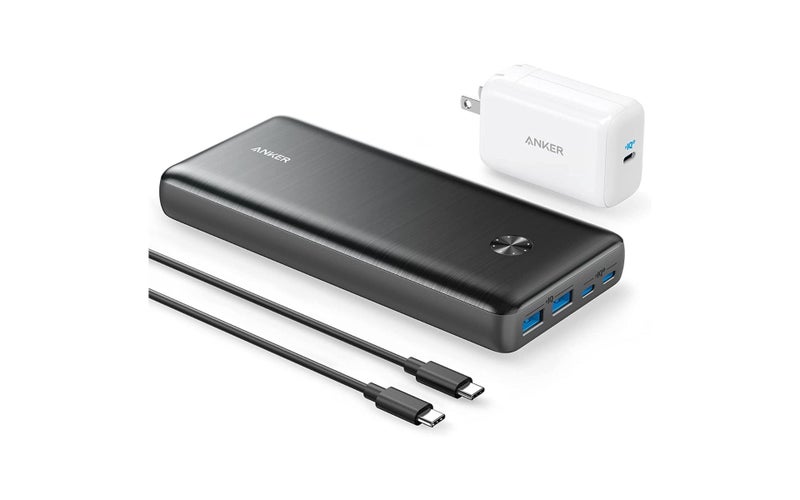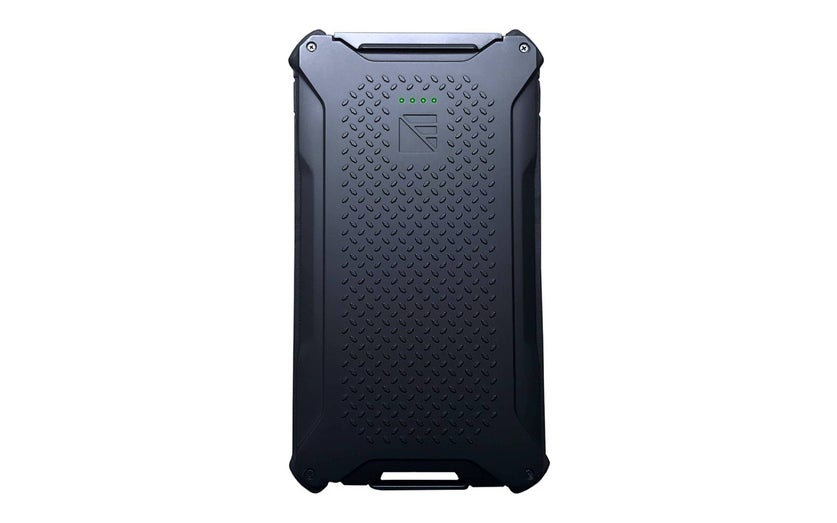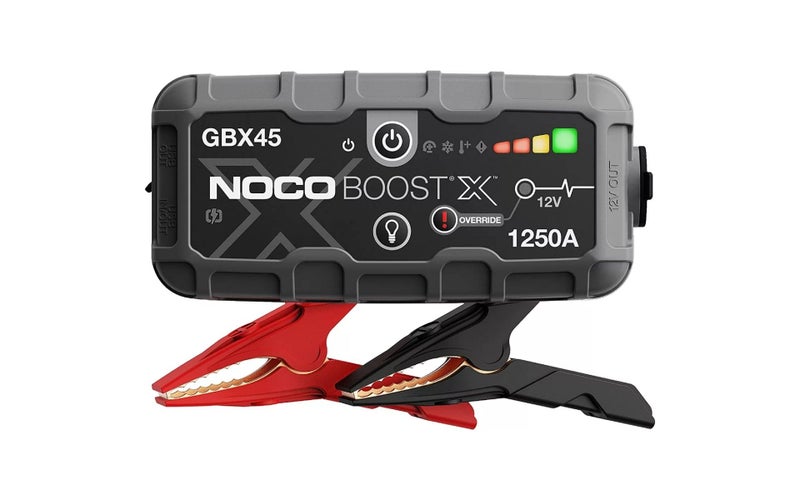We may earn revenue from the products available on this page and participate in affiliate programs.
In an age where a dead battery could mean life or death — or, more likely, an inconvenience — a portable power bank becomes all the more necessary. A power bank has many names — portable battery charger, pocket charger, battery pack — but no matter what it’s called, it’s a device used to charge portable electronics. Finding the best portable power bank requires understanding a little bit about them.
Without getting into the weeds on the technology, power banks are measured in milliamp hours, or mAh. High-capacity power banks contain more mAh. For example, 5,000 mAh is enough juice to charge an iPhone once, while 10,000 mAh is enough to charge it twice. You use a powerbank the same way you’d use an electrical outlet: You connect a charging cable to the powerbank and then plug the cable into the device you want to charge.
In this article, we list the best portable power banks available today, along with what we looked at to find them and other things you should know about them before spending your hard-earned cash.
- Best Overall: Anker PowerCore Essential 20000 PD
- Best Solar: GoalZero Venture 75 + Nomad 10 Kit
- Best Budget: DJROLL Solar Power Bank 36000
- Best for Camping: Anker PowerCore Solar 10000
- Best High-Capacity: TechSmarter TSBar Rugged 30000
- Best for Laptops: Anker 747
- Best Compact: Dark Energy Poseidon Pro
- Honorable Mention: NOCO BoostX GBX45
Externally, the Anker PowerCore Essential 20000 PD adopts a “less is more” style that looks sleek and competent. With only a single button and a brushed dark satin cover, the PowerCore alludes to Apple’s high-performance simplicity. Internally, the PowerCore is packing 20,000 mAh of lithium-powered storage and more fast-charging compatibility than you can shake a USB-C cable at.
With only two ports, the PowerCore is light on connectivity but is designed as a lightweight daily powerbank, so the reduced bulk makes for a good tradeoff. It comes with a great travel bag that makes it easy to keep the Anker portable charger and cable in a backpack, purse, or pocket without tangling or scratch risks. Though the PowerCore is more of an urban design, I still would have liked to see some water resistance to keep the rain out of the connectors in case you need to pull it out in a pinch.
I’ve carried the PowerCore as my daily battery extender for years and I’ve come to love its speed, simplicity, and compactness.
- Capacity: 20,000 mAh
- Connectors: USB-C and USB-A
- Charging time (powerbank): 7 hours at 20W, up to 20 hours with regular USB-A
- Charging standard: 18W power delivery, Power IQ
- Water resistance: None
- The Anker PowerCore is a straightforward fast charger that’s lightweight, high-capacity, and easy to use. Add a super slick look and handy extras, the PowerCore really earns the title of best overall.
Great capacity
Wide fast-charging compatibility
Handy travel bag and cable
Premium look and feel
No waterproofing
Only two input/output connections
For most power banks, a solar panel is an afterthought designed purely for emergencies. GoalZero took a different approach with its power banks, designing a whole ecosystem of power banks, power stations, and solar panels of different sizes. The plug-and-play features make it easy to get the right size power delivery for your needs, both on- and off-grid. The Venture 75 + Nomad 10 kit is an entry-level option for those who need to power only smaller devices and want to maximize portability.
When it comes to solar panels, bigger is better as more surface area affords more light-catching ability. The Nomad 10 portion of this kit is the smallest panel GoalZero offers, but is still light years ahead of what you’ll find on the backside of a brick-sized power bank, with increased portability to boot. The Nomad 10 comes with a kickstand, or you can rig it to the top of a backpack for charging while you hike. The Venture 75 portion is a competent power bank in itself with fantastic water and dust resistance, good capacity, and a rugged yet high-tech style. The 50-lumen flashlight is a little weak compared to what some of the competition is packing, though not entirely useless with an LED style that preserves color better than the more typical pure white LEDs out there.
Altogether, the Venture 75 + Nomad 10 kit makes a great combination for those who want more independence from the power grid. GoalZero also makes it easy for those seeking more capacity or solar surface area too, with a whole host of panels and banks in different sizes that are all quick-connect compatible with each other.
- Capacity: 19,200 mAh
- Connectors: USB-C, 2x USB-A
- Charging time (powerbank): 1.5-2 hours with wall charger, 11-12 hours with Nomad 10 solar panel
- Charging standard: 60W USB-C, 15W USB-A
- Water resistance: IP67
- Portable, reliable and versatile, GoalZero makes it easy to customize your solar power needs with a variety of sizes for both solar panels and solar-ready power banks.
Dedicated solar panel
Rugged outdoor-oriented design
Great compatibility
Flashlight only 50 lumens
Nomad 10 is the smallest solar panel offered
While it may be set at a budget price, DJROLL’s offering is jam-packed with features. High capacity, fast charging, wireless charging, water resistance, flashlight, a solar panel, and more, this thing has it all. Unlike a lot of budget power banks, DJROLL also integrates quite a few safety features like temperature, shock, and overvoltage protection. Lithium batteries can be fire hazards if they aren’t properly protected, so seeing a smaller brand place an emphasis on safety gives much more peace of mind than the price tag would suggest.
The solar panel is also a nice inclusion for emergencies and the LED flashlight is very powerful. The power button doubles as a flashlight on/off switch and is placed in a spot that’s very easy to press accidentally during normal handling, so it can take a little mindfulness to not inadvertently destroy your night vision.
The DJROLL Power Bank is also quite heavy. While this is expected of a high-capacity power bank, I’ve seen reports that the actual capacity can vary a bit from the advertised maximum, down to around 25,000 mAh. That’s still a very good capacity at this price point, and since my unit is still holding strong at around 36,000 mAh, it’s hard to feel cheated. Just know that you might be subject to the lithium lottery when it comes to the total capacity.
- Capacity: 36,000 mAh
- Connectors: USB-C, 2x USB-A, micro-USB, wireless Qi charging pad
- Charging time (powerbank): 9-12 hours with USB-C, ~120 hours with solar panel
- Charging standard: 3A max USB-C and USB-A, 2A max micro-USB, 1A max wireless Qi charger
- Water resistance: IP66
- Packed with features, the DJROLL Solar Power Bank 36000 offers amazing capacity and performance that rivals more expensive brands. Wireless Qi charging is a nice added touch, as well.
Great advertised capacity
Lots of connectors, including wireless Qi charging
Solar panel for emergencies
Powerful multi-mode flashlight
Power button prone to accidental presses
Quite heavy
If your camping style means you count every ounce, the PowerCore Solar is for you. It combines a good capacity, simultaneous charging, great heat and element resistance, a multi-mode flashlight, and a high-efficiency solar panel in a lightweight and durable package. The PowerCore is specially reinforced on all sides and is built from premium heat-resistant polymers to keep it safe from bumps, drops, and high temperatures. The IP64 rating means it will shrug off splashes and dusty trails without issue. And while the solar panel is still only for emergencies, I found the high-efficiency monocrystalline panel to be just a little bit quicker to charge compared to other panels in this size category.
Tough and lightweight, I did find the PowerCore was held back by using the older USB-A and micro-USB connectors. With USB-C being more powerful and convenient, it would certainly speed up PowerCore’s ability to charge the most high-tech devices. That said, a USB-A to USB-C cable is easy to get and the included micro-USB cable charges the powerbank itself quite quickly. And with a special trickle charge mode, the PowerCore won’t blow out smaller items like fitness trackers and smartwatches.
At 10,000 mAh capacity, I found this version of the PowerCore perfectly sufficient for a two- to three-day outing, with a slight boost from solar charging. Anker does offer a bigger 20,000 mAh version as well, for those seeking more power with the tradeoff being a slight increase in weight.
- Capacity: 10,000 mAh
- Connectors: 2x USB-A, micro-USB (input only)
- Charging time (powerbank): 5.5 hours via micro-USB
- Charging standard: 15W USB-A
- Water resistance: IP64
- Lightweight with great features, the PowerCore Solar is excellent for backpackers and lightweight hikers that still need some juice on-the-go, while great ruggedness rounds out the package.
Very lightweight
Great water/dust resistance
Simultaneous charging plus trickle charge capability
Good flashlight
Small solar panel
No USB-C
TechSmarter’s 30,000 mAh beast is an overall fantastic choice for travelers and outdoor folks who don’t mind a bit of extra weight. The TSBar is tough, safe, and lasts forever. It kept my Samsung S21 Ultra fully charged during a three-day trip completely by itself and still had a battery left over. Big numbers sell power banks, but TechSmarter built the TSBar to last, and not just get clicks on Amazon. It has a full suite of safety features, IP66 water and dust resistance, great connectivity with pass-through charging capability, and a flashlight that illuminates a nice wide area.
It is heavy though — that many power cells crammed into a package will inevitably make the weight go up. So while it functions well in the great outdoors, keep in mind how those extra ounces will feel if you hike long distances.
The TSBar was a great performer in all categories that will serve you well if you need multiple charges on your smartphone or tablet during a trip.
- Capacity: 30,000 mAh
- Connectors: USB-C, 3x USB-A
- Charging time (powerbank): 12 hours
- Charging standard: 1x 20W PD USB-C, 2x 20W TS+ USB-A, 1x 1A USB-A
- Water resistance: IP66
- Excellent capacity keeps your devices charged for days while the tough construction, excellent flashlight, and lots of fast-charging connectivity makes for a worry-free travel companion.
Very high-capacity
Great connectivity with pass-through charging
Excellent safety and protection features
Great flashlight
High-capacity means high weight
Powerful laptops require a powerful battery, and Anker’s 747 provides exactly that. Providing an insane 87W max output, the 747 can fully charge a laptop in 30 minutes, while 25,600 mAh of capacity gives plenty of charge for other devices, as well. With the ability to charge four devices at once, the 747 allows you to set up anywhere and keep your other devices topped up while you work. Anker’s reputation for high quality also gives peace of mind, as advanced graphene thermal regulation and a three-point safety system keep all that power cooled and controlled.
Naturally, a power supply this tremendous is also going to weigh quite a bit, coming in at 1.3 pounds. Some sort of splash or rain protection would have been nice as well, but as a primarily urban and travel companion, I wouldn’t knock any stars off for that. Besides, rubber flaps would ruin the high-tech brushed aluminum aesthetic of this stylish power bank.
- Capacity: 25,600 mAh
- Connectors: 2x USB-C, 2x USB-A
- Charging time (powerbank): 2.5 hours with 65W wall charger, 17 hours with 5W charger
- Charging standard: PowerIQ 3.0 87W max output
- Water resistance: None
- High-capacity and blazing fast 87W max output, the 747 also includes advanced safety and temperature features to keep your laptop safe while also charging up to four devices.
Charge up to four devices at once
Top-tier charging output for maximum laptop performance
Advanced safety features with graphene layers
High-quality LG lithium power cells
Heavy
No water resistance
If your power charging needs also happen to include proximity to high explosives and being fully submerged for 45 minutes, the Poseidon Pro is the powerbank for you. Overbuilt in the extreme, Dark Energy made sure the Poseidon Pro is the toughest powerbank on the market. Not only that, the Poseidon Pro is extremely lightweight, at just 9.6 ounces. The flat design also fits just about anywhere in even the most overstuffed packs.
The Poseidon Pro has a decent capacity of 10,200 mAh and has a great output, which will keep smartphones and some tablets running for several charges, but for more high-end devices, you do trade some battery life for the Poseidon Pro’s small size. Also, for being such a tough little powerbank, I was surprised to find the built-in flashlight to be very weak. It’s enough to illuminate an instrument panel or object of interest, but is insufficient for anything beyond your immediate surroundings.
That said, I found Dark Energy’s claims of an indestructible, lightweight power bank to be fully supported. It’s light enough that I forgot I had it in my backpack half the time, and it still hasn’t shown a scratch over several trips into the great outdoors. It also came with some goodies, like a multi-tool carabiner and extra-tough braided cable. The carabiner wasn’t much to write home about, but nice to have all the same, while the braided cable was an even nicer inclusion. All in all, it’s a tough little beast that handled everything I threw at it with ease.
- Capacity: 10,200 mAh
- Connectors: USB-C, USB-A
- Charging time (powerbank): 4-5 hours
- Charging standard: 3A USB-C
- Water resistance: IP68
- Small but mighty, the Poseidon Pro is probably the toughest powerbank on the market, and one of the lightest too, while still delivering a good capacity and fast charging.
Extremely lightweight
Virtually indestructible
Great compatibility
Average capacity
Anemic flashlight
Who says power banks have to be just one thing anymore? In today’s age of technology, we now have a world where car jump starters and electronic power banks can live together in harmony. NOCO is already well-known for making excellent vehicle power accessories, and its BoostX lineup also brings that expertise to the powerbank market.
Designed to have enough juice to jump-start cars, trucks, and ATVs, the BoostX is naturally quite heavy and bulky. The enormous battery life more than makes up for it though, allowing it to power smartphones, tablets, laptops, and more for days. The Ultrasafe 2.0 features also ensure that all that monstrous 12V 1250A power is kept separate from your sensitive electronics, while also making jump-starting a car a breeze. The powerful 100-lumen flashlight also has multiple modes for emergency flashers, SOS signaling, and strobe effects.
The weight might make portability seem difficult, but I’ve actually found the GBX45 quite handy for car camping. All cables are detachable, so it’s easy to keep the bulky 12V cables in the vehicle while I take the battery unit along for short hikes or powering up devices in a tent. The included travel bag also makes keeping everything together even easier. And the BoostX’s utility in emergencies on the road is second to none.
- Capacity: 31 Wh
- Connectors: 12V car starter, USB-C, USB-A
- Charging t(powerbank): 48 minutes
- Charging standard: 1250A car starter, 60W USB-C
- Water resistance: IP65
- Astounding versatility, durability, a powerful flashlight, and superb safety features for your car and devices means this jump starter pulls double-duty as a great, if bulky, powerbank.
Jumps cars and charges electronics
Huge capacity
100-lumen multi-mode flashlight
Ultrasafe 2.0 protection
Bulky
Things to consider before buying a powerbank
Capacity
Naturally, higher capacity numbers attract more clicks, but keep in mind the kind of devices you’ll be powering. Most smartphones only have 2,000 to 5,000 mAh batteries, so just a 10,000 mAh power bank will get you two or more full charges. And the bigger the powerbank, the heavier and less portable it will be.
Safety features
Lithium batteries are great for charging high-tech devices, but they can be dangerous when not properly protected. Look for overvoltage protection, heat sensors, overcurrent protection, and similar electronic safety features to make sure fire and explosion hazards are kept at bay.
Charging standards
To get the fastest charge for your device, a little bit of research into what charging standard your smartphone, tablet, or other device uses will go a long way. It takes more than just a proper cable connection to get a good charging speed out of a fast-charge-capable device, check to make sure the powerbank you’re interested in is compatible with the type of fast-charge your device uses. It can be confusing with terms like Power Delivery 3.0 or 65W USB-C connectors, but most reputable power banks will list particular common devices to make it easier for shoppers to know if their device will receive the fast-charge it’s rated for.
FAQs about portable power banks
Q: How many mAhs is a good power bank?
A: Naturally, it depends on what you’re going to be powering, but most people are looking to keep their smartphone or tablet going, with the occasional other small device. Most phone batteries are between 2,000 and 5,000 mAh, so a powerbank between 10,000 and 20,000 mAh will get multiple full charges of these common devices. Higher capacities exist too, with a corresponding increase in weight.
Q: Which is better for a powerbank, 10,000 mAh or 20,000 mAh?
A: Most lightweight power banks will be around 10,000 mAh, so if you’re searching for a very portable power reserve, this is a good capacity to search for. If you don’t mind a little extra weight, 20,000 mAh power banks will give more charges to your devices. That said, also make sure the power bank has the same fast-charging standards as your device. High capacities make less of a difference to folks on the go if it takes hours and hours to charge their device.
Q: What should I look for when buying a powerbank?
A: In addition to the basics mentioned in the FAQ section, brand reputation goes a long way. High-quality brands will hold their stated capacities for longer, and have more safety features. If you’re going to be out in the elements a lot, water resistance and flashlights are great to have. Solar panels are good for emergencies, but unless you hook up a powerbank to a large dedicated solar array, they’re really only good to get enough charge for a quick emergency call.
Final thoughts
For an excellent daily driver in urban environments, the Anker PowerCore Essential is fast, portable, and high-capacity. The stylish package and handy travel bag make the PowerCore superbly portable and fit in any setting, from college to work or light camping. Anker’s record for safety and build quality make the PowerCore an easy choice for the Best Overall power bank. For those seeking a more off-grid lifestyle, the GoalZero Nomad solar panels are easy-to-use and rugged while their power banks are fast, durable, and reliable. On the budget side of the equation, the DJROLL 36000 offers high capacity and a diverse feature set at a great price.
Methodology
I tested dozens of power banks across a wide array of devices, including Samsung phones, Apple phones, my own GoPro camera, and several brands of laptops. I checked their capacities using a ChargeDoctor monitor to make sure they were as advertised throughout the span of this project. Most of my testing was in urban and workplace settings, but I had several opportunities to test out power banks in the great outdoors in places like Zion National Park, Catalina Island, and several state parks.
In addition to capacity and charging speed, I also looked for overall ruggedness and temperature tolerance. Portability was also a big factor in my testing, especially on longer trips. Thankfully, safety wasn’t an issue as all power banks I tested had great safety ratings, so no unexpected fires were encountered.

